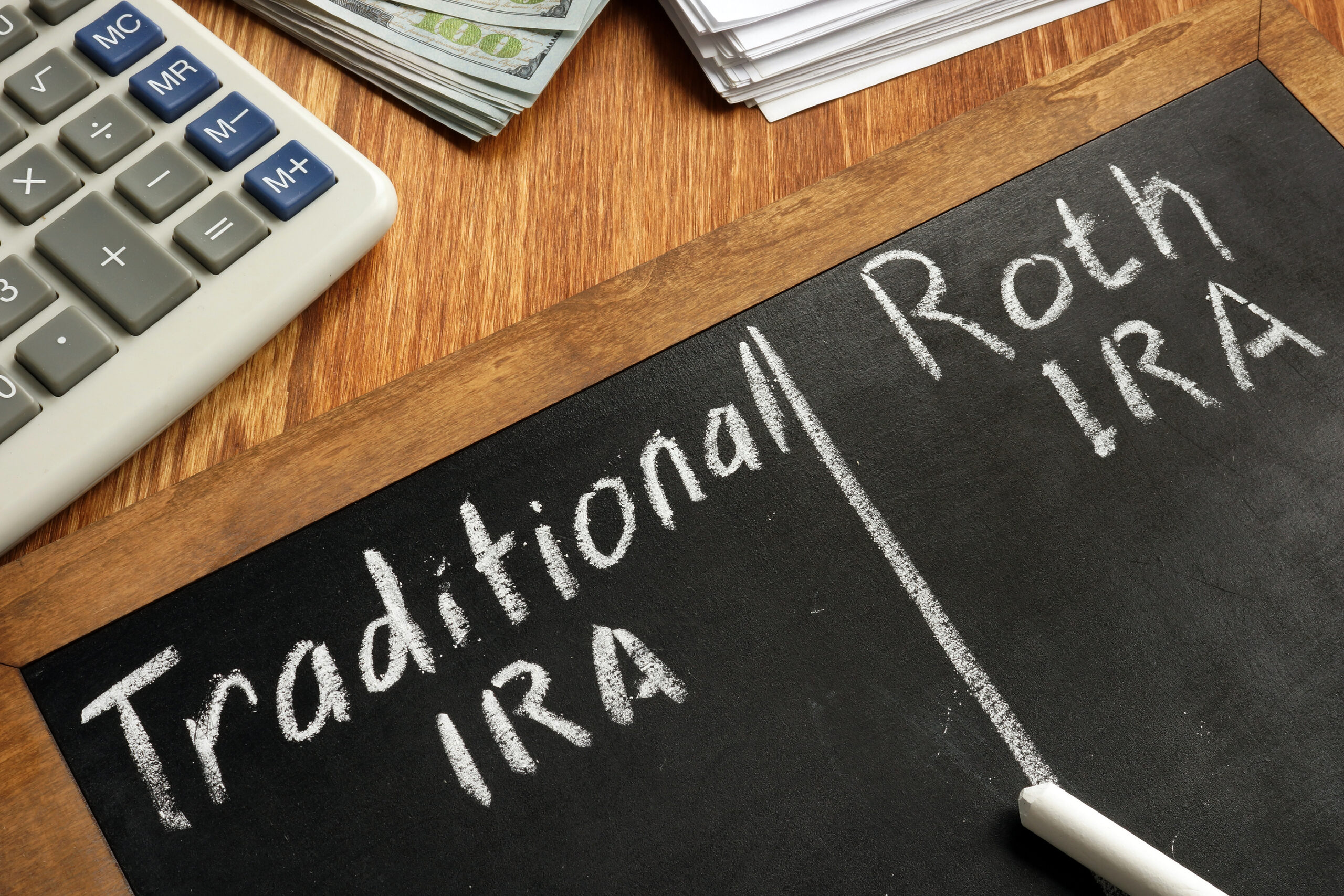Retirement Planning – IRA and Roth IRA
 You probably have some money stashed away in a traditional IRA account. It is easily the most popular form of retirement savings around. But many people don’t understand the ins and outs of the IRA as a retirement savings instrument.
You probably have some money stashed away in a traditional IRA account. It is easily the most popular form of retirement savings around. But many people don’t understand the ins and outs of the IRA as a retirement savings instrument.
While we like to help our clients leverage their “now” money to build on their dreams for today as well as saving for tomorrow – IRAs are not going anywhere, and they can be a helpful aspect (not the entirety) of a solid financial plan.
Here are some things you need to know about Traditional and Roth IRAs, so you can decide if either of these are right for you. If you want to learn about other IRAs, check these articles on the SIMPLE IRA <link> and SEP IRA <link>.
Individual Retirement Accounts (IRAs) allow you to save for retirement in a tax-advantaged way. Roth and Traditional IRAs use different tax advantages. As I wrote in a previous article:
“The biggest difference between a Roth IRA and a traditional IRA is when and how you get a tax break. The tax advantage of a traditional IRA is that your contributions are tax-deductible in the year they are made. The tax advantage of a Roth IRA is that your withdrawals in retirement are not taxed. With a Roth IRA, you pay tax on the money going in and don’t pay tax on the money going out.”
Key things to remember about Roth:
In addition to the way they are taxed, there are other features of the Roth IRA to understand. First, you will need to pay into the plan for at least five years in order to make withdrawals. There is also a five-year rule on conversions. You’ll have to wait five years from the date of conversion from 401(k) or other instruments into the Roth IRA. So you’ll need to keep track of those dates. Some exceptions to the five-year rule exist. For instance, you can use up to $10,000 as a first-time homebuyer, or use it for higher education for you, your spouse, children, or grandchildren. You can also withdraw funds without penalty for health insurance premiums if you lose your job or if you need to reimburse yourself.
As with a traditional IRA, you cannot withdraw before age 59.5 unless it is for a qualified expense as outlined above. But unlike a traditional IRA, there are no required minimum distributions (RMDs) when you hit age 70.5.
Traditional IRA
With a traditional IRA, you are contributing and then using that amount as a tax deduction in the current tax year. That money then grows tax-deferred. When you take that money out it is all 100% taxable.
A few key rules to keep in mind with the traditional IRA:
- When you reach age 70.5, there is a Required Minimum Distribution.
- You cannot withdraw before age 59.5 without a 10% penalty unless you have a qualified exception such as those outlined above for the Roth.
With either the Roth or a Traditional IRA, you can contribute to IRAs in both your name and your spouse’s name, even if only one of you is a wage earner.
Which is right for you? Will it make more sense to reduce taxable income now and get that tax advantage? Or will it make more sense to pay taxes now and take disbursements tax-free with a Roth?
Planning for time freedom (retirement) is never simple. If you have questions about IRAs or literally anything to do with what your path to time freedom can look like, we’d love to talk with you.